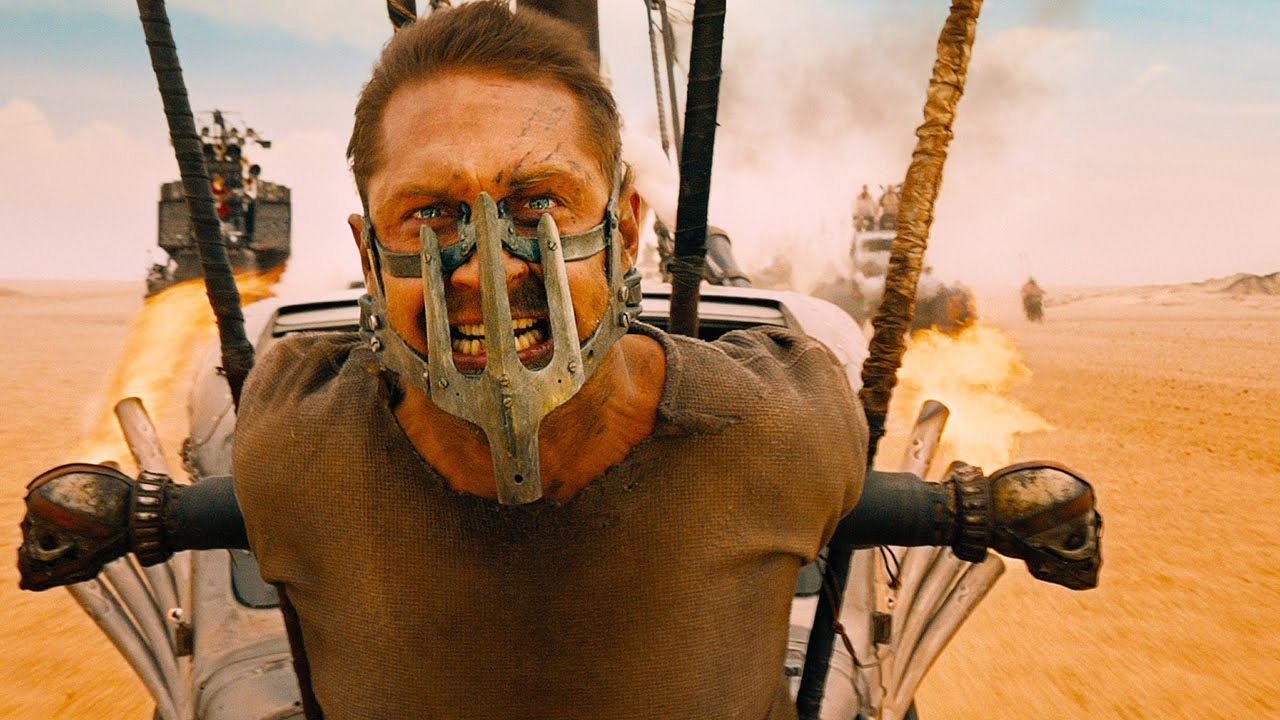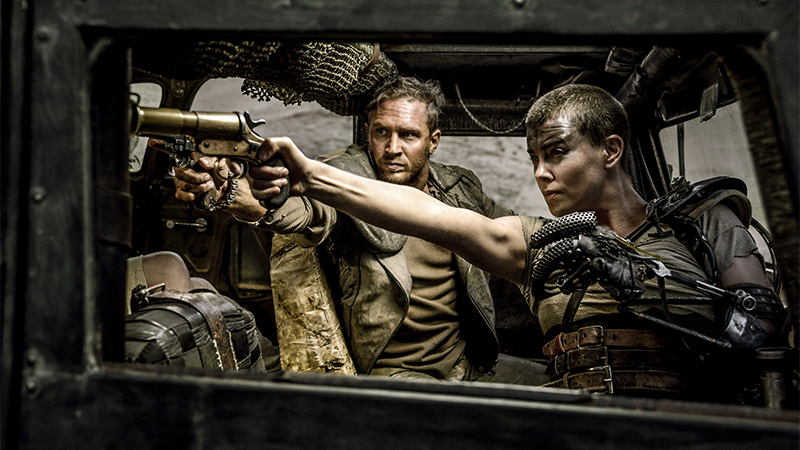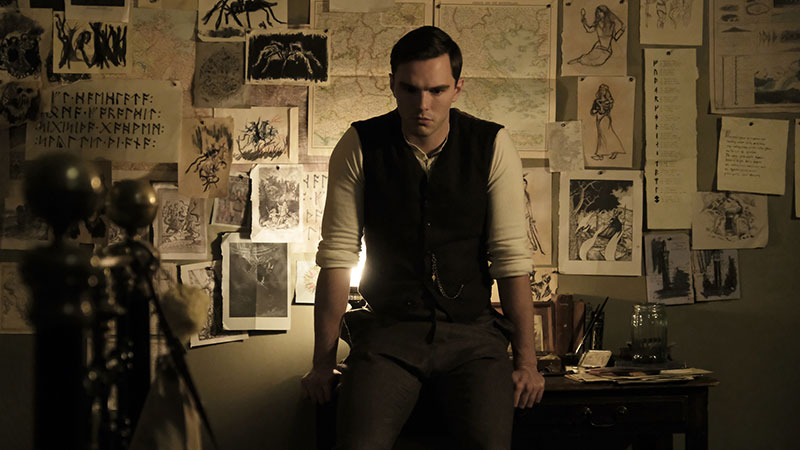Mad Max: Fury Road (2015) is a cinematic magnum opus that roars into life from the outset, demanding viewers’ attention with its deafening audacity and stunning spectacle. Directed by George Miller, it’s a bone-crushing, fuel-injected adrenaline rush, unlike anything evidenced in the action genre before.
Rather than acting as a remake, Mad Max: Fury Road serves as a continuation of the unique mythical world that Miller first introduced us to in 1979. Tom Hardy takes up Mel Gibson’s mantle to play the titular character, Max Rockatansky, doing so with a quiet intensity and a charismatic disdain for conversation, making Max’s silent strength one of the most captivating aspects of the film.
Charlize Theron joins the cast, too, playing Imperator Furiosa, a one-armed warrior tasked with transporting the wives of tyrant Immortan Joe (Hugh Keays-Byrne) to safety. Theron delivers an unforgettable performance, injecting a fiery spirit of rebellion into the film’s frenetic pace. She stands as an equal to Hardy’s Max, if not surpassing him, making Fury Road as much her story as it is his.
What truly sets this film apart from its predecessors and contemporaries is its visual audacity. Miller and his team create a paradox where the barren, scorched earth of the post-apocalyptic wasteland is also a canvas for breathtaking beauty. Cinematographer John Seale paints vivid, surrealistic images of the desert, setting dusty expansive landscapes against clear, cobalt skies, juxtaposing the desolation of the scenario with the sheer grandeur of the arid wilderness.
The action sequences are a spectacle unto themselves— a ballet of chaos even. Each chase, each stunt, each explosion is carefully choreographed and painstakingly shot to create a visual poetry of destruction. It’s incredibly refreshing to see genuine, raw stunt work combined with seamlessly integrated special effects to create heart-pounding action. Mad Max: Fury Road embraces practical effects in an era when CGI has taken over, and it’s all the better for it.
A noteworthy aspect is the strong feminist undercurrent that runs throughout the film. It never feels forced or contrived but is instead a natural component of the narrative. The women in Fury Road aren’t mere damsels in distress; they are warriors, leaders, saviors —in positions traditionally reserved for men in action films. They are essential for the film’s progression, driving the narrative at an unremittingly frenzied pace.
Furthermore, the movie’s music seamlessly weaves itself into the film’s DNA. Junkie XL’s score is fiercely vibrant, matching the relentless energy of the on-screen action with roaring guitars and pounding drums that add to the viewer’s visceral experience.
Of course, the film is not without its flaws. Dialogue is sparse, and the narrative occasional seems secondary to the grand spectacles of vehicular warfare. Yet, these are not fatal flaws. Indeed, they actually contribute to the primal, savage charm of the movie, fitting into the world Miller has envisioned.
Mad Max: Fury Road is a visceral, breathtaking ride through a dystopian wasteland that refuses to let up from start to finish. It is a visual masterpiece, with Miller’s distinctive film-making reigniting the action genre with a shot of sheer, unstoppable energy.
Investing as much in its characters as it does its spectacle, Fury Road is equally a story about survival, redemption, and revolt. It thus becomes clear that Miller’s return to the franchise after a thirty-year hiatus was no nostalgic trip down memory lane. Instead, it was to redefine the genre he helped shape, delivering not just an exceptional sequel, but arguably, one of the best action films of the decade.
Mad Max: Fury Road is raw, thrilling and relentlessly entertaining—a cinematic experience not to be missed.




